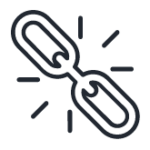Brief Overview of DApp Development and Its Importance in the Blockchain Ecosystem
Decentralized Applications (DApps) are transforming the digital landscape by offering alternatives to traditional centralized applications, leveraging blockchain technology to promote transparency, security, and user sovereignty. The essence of DApp development lies in its capacity to enable peer-to-peer transactions without intermediaries, thereby fostering a new era of trustless interactions across various domains including finance, social media, and gaming.
Introduction to TRON as a Platform for DApp Development
TRON stands out in the blockchain ecosystem as a robust platform designed for the decentralized web, offering high throughput, scalability, and availability for DApp developers. Its dedication to building a truly decentralized internet has made it a favorable choice for developers looking to create innovative DApps that can cater to a global audience without the limitations of traditional blockchain platforms.
Understanding TRON’s Infrastructure
Overview of TRON’s Blockchain Technology
At the heart of TRON’s appeal is its powerful blockchain technology, designed for the seamless execution of smart contracts and the efficient handling of high-volume transactions. Unlike some platforms that struggle with congestion and high fees, TRON is engineered to support a vast array of DApps with its unique consensus mechanism and dedicated blockchain architecture.
Key Features That Make TRON Suitable for DApp Development
TRON distinguishes itself with several key features including:
- High throughput, allowing for rapid transaction processing.
- Low transaction fees, enhancing accessibility for users and developers alike.
- A scalable network that can accommodate a growing ecosystem of DApps without compromising performance.
Setting Up the Development Environment
Tools and Software Required for DApp Development on TRON
Before diving into DApp development on TRON, developers need to equip themselves with a set of tools and software including the TronLink wallet for interacting with the blockchain, TronStudio for smart contract development, and the TRON Grid API for accessing the TRON network.
Step-by-Step Guide to Setting Up a Development Environment
- Download and install TronLink extension for Chrome to securely connect to the TRON network.
- Install TronStudio to create and test smart contracts locally.
- Sign up for access to the TRON Grid API, facilitating seamless interaction with the TRON blockchain.
Smart Contracts on TRON
Introduction to Smart Contracts in the Context of TRON
Smart contracts are self-executing contracts with the terms directly written into code. On TRON, they are pivotal in developing DApps, serving as the backbone that automates transactions and enforces agreements without the need for intermediaries.
Languages and Frameworks Used for Writing Smart Contracts on TRON
Smart contracts on TRON are primarily written in Solidity, a language specifically designed for creating and implementing smart contracts on blockchain platforms. Developers can leverage the TRONBox framework, which provides a suite of tools designed to streamline the development and deployment process of smart contracts on TRON.
Developing Your First DApp on TRON
A Basic Tutorial to Create a Simple DApp
Starting with a simple DApp on TRON can be an enlightening way to understand the intricacies of DApp development. A foundational DApp could involve creating a smart contract that handles basic transactions or interactions, subsequently deploying it to the TRON blockchain for real-world application.
Best Practices in Coding and Design for Efficiency and Security
Adhering to best practices is essential for the success and security of your DApp. This includes thorough testing, employing security measures like audits and code reviews, and ensuring the DApp is user-friendly and accessible. Optimizing smart contract code for efficiency can significantly reduce transaction costs and enhance the user experience.
Testing and Deploying DApps
Methods and Tools for Testing DApps on the TRON Network
Testing is a critical phase in DApp development, requiring tools and methods that can simulate various conditions and user interactions. TRON’s Shasta testnet provides a perfect environment for developers to test their DApps without risking real funds, using TronGrid as a gateway to interact with the testnet.
Guide to Deploying DApps on the TRON Blockchain
Deploying a DApp on TRON involves several key steps:
- Finalizing and testing the smart contract on the Shasta testnet.
- Moving to the mainnet by connecting your project to the TRON network via TronLink.
- Deploying the smart contract to the blockchain, making it accessible to users worldwide.
TRON DApp Ecosystem and Community Support
Overview of the Existing DApp Ecosystem on TRON
The DApp ecosystem on TRON is vibrant and diverse, hosting a wide range of applications from decentralized finance (DeFi) platforms to entertainment and social media DApps. This ecosystem is supported by TRON’s high-performance blockchain, enabling developers to explore new possibilities in DApp innovation.
Resources for Community and Technical Support
Developers venturing into TRON DApp development can tap into a wealth of resources for community and technical support. The TRON Foundation offers comprehensive documentation, while forums and social media platforms host an active community of developers willing to share insights and assistance.
Conclusion
Recap of the Key Steps in TRON DApp Development
To embark on DApp development on TRON, developers must familiarize themselves with the platform’s infrastructure, set up the necessary development environment, master smart contract development, and adhere to best practices for designing, testing, and deploying their DApps.
Encouragement for Continued Learning and Development
The journey into DApp development on TRON is one of continuous learning and exploration. As the blockchain landscape evolves, so too will the opportunities for innovation within the TRON ecosystem. Developers are encouraged to stay engaged with the community, keep abreast of the latest technologies, and contribute to the growing landscape of decentralized applications.

